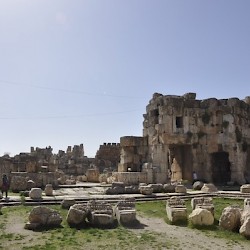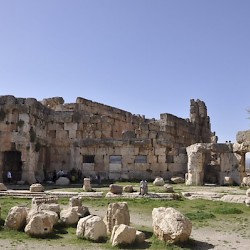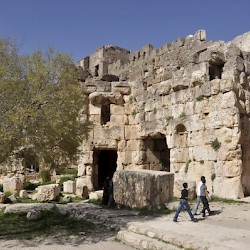Baalbek: Temple of Jupiter, Hexagonal Court
Baalbek or Heliopolis (Ἡλιούπολις, "sun city"): town in the northern Bekaa valley, site of the largest sanctuary in the Roman world.
Temple of Jupiter, Hexagonal Court
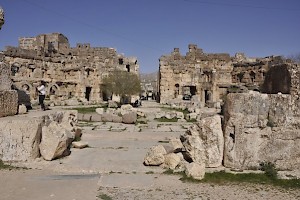
A visitor to the shrine of Jupiter at Baalbek would have reached the Hexagonal Court from the Propylaea. The two parts of the sanctuary are separated by a raised threshold in the gate itself, which served as a boundary between the profane portico and the sacred space of the temple itself.
It is possible that on the mosaics in the hexagonal court, dances were performed, but we may assume that it was also the place where people prepared themselves for a visit to the shrine itself. The visitors may well have left their possessions over here, before proceding to the Great Court.
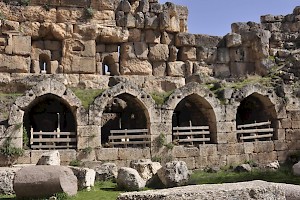
Planned in the second quarter of the second century and apparently renovated by Philip the Arab (r.244-249), the Hexagonal Court was about seventy-five meters wide. That it was never fully completed, can be deduced from the fact that some sculpture remained unfinished.
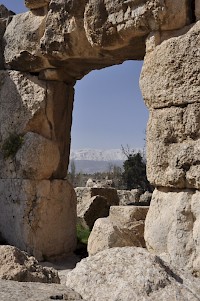
Four of the six sides of the Hexagonal Court were occupied by porticoes, supported by thirty columns made of Egyptian granite. The remaining two sides were, of course, the triple door to the Propylaea and, on the opposite side, the gate to the Great Court.
The central space of the Hexagonal Court was left open. After the rise of Christianity, however, it was perhaps covered over with a dome, with a diameter of some thirty-five meters. This may have happened when the emperor Theodosius II appears to have built a basilica on the Great Court. If this is true, the complex had come to resemble the Basilica of the Holy Sepulcher in Jerusalem, which also combined a basilica with a dome.
